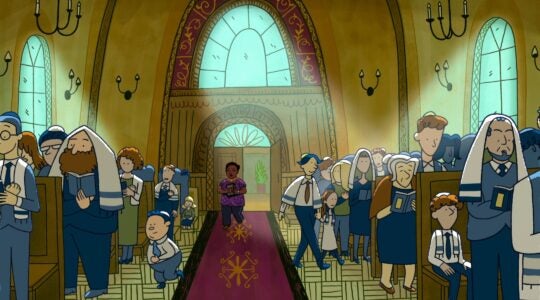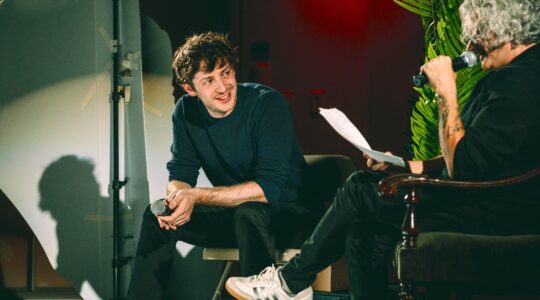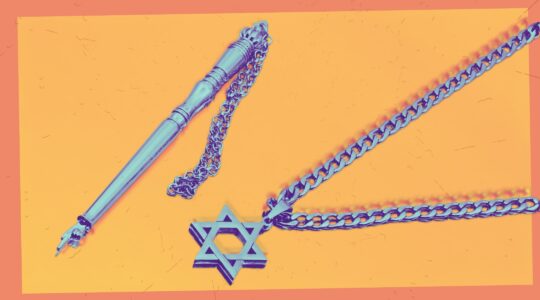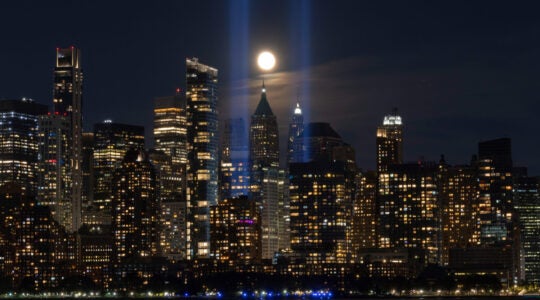Kudos to Elli Fischer for drawing attention to a fundamental crisis within American Modern Orthodoxy, one that is even graver than his diagnosis. (“Modern Orthodoxy Has Its Costs,” Opinion, Feb. 27)
Fischer astutely describes how the exorbitant cost of living in the Modern Orthodox community has discouraged creative personalities from pursuing careers in the arts. But the problem in Modern Orthodoxy has become far more pervasive, threatening to weaken its two pillars, “Torah and Madda” (both Jewish and secular study). Modern Orthodoxy can no longer feel confident encouraging its constituent members to pursue professions in either of these spheres.
Although few want to speak about it, in recent decades the American Modern Orthodox community has produced relatively few scientists, mathematicians, humanities scholars and journalists, areas which were previously populated with numerous Modern Orthodox men and women. Hardly surprising, though, given that math majors are encouraged to pursue the financial sector, science majors are urged to attend medical school and those who excel at Talmud are directed to become lawyers.
Facing strong social and financial pressure, compounded by stiff competition in the humanities and sciences, it is difficult to buck the system.
Another one of Fischer’s comments is understated or just plain naïve. He writes that “creative types [in the Modern Orthodox community] will gravitate towards the rabbinate or Jewish education, careers that offer a creative outlet.” But it is rare to find a male elementary school teacher in Modern Orthodox communities. The primary positions held by men are as administrators, i.e. the higher paying jobs in education. Who are supposed to be the role models for our boys? And what kind of message are we sending both our boys and girls, who mostly see men only at the helm of their institutions?
When I first started dating my now husband, a Talmud scholar from the Satmar community, he noted that he was surprised by my male circle of friends. He shyly explained that he was puzzled that “the majority are in law or finance, not rabbis or educators. In my community,” he said, “all the top guys go into chinuch” (Jewish education). I was so stunned that I didn’t know how to respond. The fact is that in my community, the one he was hoping to join, most of the best and brightest in the fine Modern Orthodox and secular institutions I was proud to attend do not pursue careers in the rabbinate or Jewish education.
Unfortunately, the factors described above have serious collateral damage. Fischer writes that the Modern Orthodox community is known for its intellectual rigor and curiosity. But this, too, is rapidly changing. A community that teaches its children that Torah, while important, is not to interfere with going to the finest secular institutions, and that artistic, scientific and academic pursuits are all means to get into the best schools so that one can land a top job, is a community that will have difficulty sustaining its intellectual rigor in either Torah or Madda for long.
While many pay lip service to intellectual activities or the arts, they do not want their children to devote themselves to the life of the mind. Scholarship and the arts are thus neglected even as leisure activities. I suspect that fewer in the Modern Orthodox community under the age of 50 go to museums, lectures on science or classical music concerts these days. Those passionate few who remain in the arts or the academy are more likely to choose to send their kids to public school, or move to Israel (where the balancing act is more of a possibility) or opt out of the Modern Orthodox community altogether. Those who pursue Torah will either veer to the right, where education is more affordable, or struggle silently.
I don’t know when being Modern Orthodox became synonymous with being rich, but it has. That is, rich by many Americans’ standards, i.e. by those who do not incur the costs of a Modern Orthodox lifestyle. As Fischer mentions, families earning $300,000 can find themselves having a hard time making ends meet, given day school tuitions, the cost of sleep-away camps, etc. This has created a community which is homogenous and, at times, stifling.
American Modern Orthodoxy must first recognize the problem: namely that it is not as intellectuality vibrant or creative as it once was. The steep costs of the Modern Orthodox lifestyle are inimical to fostering careers in Torah and Madda, the foundations of Modern Orthodoxy. This phenomenon has helped create a culture that is increasingly materialistic and narrow. Beyond problem-solving the tuition-crisis, the community needs to think how it can best encourage alternate career paths.
Perhaps offer Modern Orthodox artists, Torah scholars and scientists some kind of financial incentives, encouraging and celebrating their pursuits. Communities could also have them play a greater role in schools, synagogues and other settings, heightening their status and thereby giving Modern Orthodox Jews a truer appreciation of the depths of these fields.
I look forward to the day when Jewish mothers and fathers will want their daughters to grow up and meet a nice Jewish artist.
Sharon Flatto is an associate professor of Judaic Studies at Brooklyn College and the director of its graduate program.
The New York Jewish Week brings you the stories behind the headlines, keeping you connected to Jewish life in New York. Help sustain the reporting you trust by donating today.




